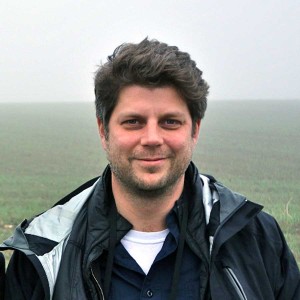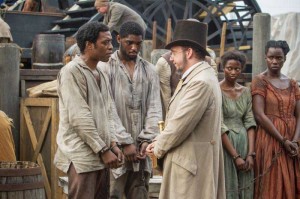
“It was a location-based movie,” said production designer Adam Stockhausen of his work on director Steve McQueen’s highly lauded and utterly sobering 12 Years a Slave. That may be somewhat understating the theme of the entire film, since its story – about a free black man, Solomon Northrup who is kidnapped into slavery – is entirely based on location as the reason these atrocities visited on Northrup. In other words, the whole notion of kidnapping free blacks to add to the stock of slaves sold in the south was entirely based on there being a vast location where such institutionalized cruelty was legal.
More specifically, though, Stockhausen is referring to the all-Louisiana shoot for the film, where much of Northrup’s story takes place. Though even the before-and-after segments, set in Sarasota Springs, NY, were doubled in New Orleans, with Stockhausen poring over old “maps, photographs and paintings” to evoke the era and the geographies of the film.
 For Sarasota – a vacation resort because of the springs – a contemporaneous pavilion provided the key detail, which, when reconstructed, allowed the Crescent City to double for upstate NY.
For Sarasota – a vacation resort because of the springs – a contemporaneous pavilion provided the key detail, which, when reconstructed, allowed the Crescent City to double for upstate NY.
As for the series of plantations where Northrup endured his imprisonment, those still exist in Louisiana – some as museums or improbable wedding sites, some in disrepair, many still readily available for location work.
Aside from recreating NY, Stockhausen had to recreate Louisiana as it looked in the 1840s, some years before the “huge explosion in photography, in the 1860s,” that would mark so much of our visual sense of the Civil War era. “What do we think changed in that 13 years?” Stockhausen wondered, in the period from Solomon’s capture, and eventual release, to the beginning of the photographic record.
He’d compare the images with the “beautiful paintings” that were also commissioned to capture plantation life, at least as it seemed to the antebellum owners. “They were almost postcard images, celebrating these plantations.”
But besides a wealth of visual images, Stockhausen likes to start, not only with paper and pencil in hand, but with early conversations about a film’s look involving “with the whole team – the director of photographer, the costume designer,” and of course, the director.
 His conversation with McQueen came between two rather long ones with director Wes Anderson, for whom he designed Moonrise Kingdom, and the upcoming Grand Budapest Hotel” He also art directed Anderson’s Darjeeling Limited.
His conversation with McQueen came between two rather long ones with director Wes Anderson, for whom he designed Moonrise Kingdom, and the upcoming Grand Budapest Hotel” He also art directed Anderson’s Darjeeling Limited.
Yet it was another crew conversation, with line producer Anthony Katagas, that led him to 12 Years a Slave. He’d worked for Katagas on the Wes Craven horror film My Soul to Take, and it was Katagas who brought him on board for this story about another kind of soul-taking altogether.
As for being on location in and around Louisiana, Stockhausen describes the process as “leap frogging forward,” on location with crew to open one set while hoping to find time to work ahead on the next one. “Some days, it’s impossible to get away,” he said.
Meanwhile, Stockhausen prepares to get away almost as far as one can, at least imaginatively, as he preps a science fiction opus that will have him back in Germany soon. No word yet on whether that one will involve a record of postcard imagery clashing with all too real blood, sweat and tears.





